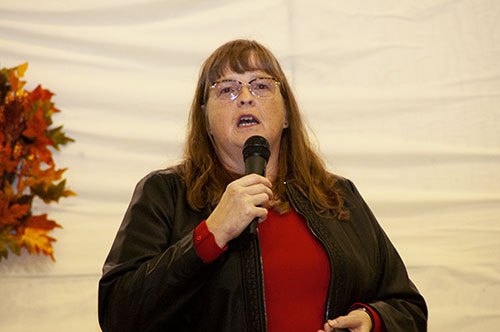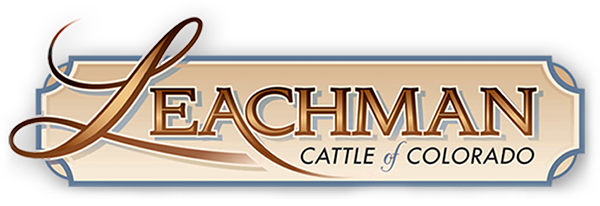Is it Time to Reconsider an AI Program?
SDSU animal scientist addresses many of the objections raised to adopting reproductive technologies.
MITCHELL, Neb. (Nov. 19, 2019) — It’s not just the older cattle folk. Some relatively young cow-calf producers still shy away from various technologies applicable to beef cattle production. That would include reproductive technologies — those human interventions and management practices applied to assist or enhance the cow-calf producer’s breeding objectives. We’re talking about things like estrus synchronization and artificial insemination (AI), which certainly are not brand-new technologies. They’ve been around for a long time, and they work. The potential for increasing profitability through their proper application has been demonstrated over and over again.
 |
“Studies show that cows that conceived to fixed-time AI are likely to calve over a period of 16 to 21 days,” said SDSU’s Julie Walker, adding that the maximum number of cows that might calve on any given day would be 20% of the herd. [Photo by Troy Smith] |
However, according to South Dakota State University Animal Scientist Julie Walker, the adoption rate for each remains relatively low. She talked about reproductive technologies at the 26th Range Beef Cow Symposium hosted Nov. 18-20 in Mitchell, Neb., and addressed some of the reasons why cow-calf producers might choose not to use them. In most cases, she said, it’s about producer perceptions of cost.
Walker admitted there was a time when it may have been difficult, especially for commercial cow-calf producers, to economically justify application of synchronized AI. Often-cited reasons included time, labor and facility requirements, and the price of semen for AI. However, things have changed.
“Over the last 10 years or so, the price of an average herd bull has increased by 56%, with bulls averaging around $5,000 now. Over the same period of time the average price of a straw of semen increased by 38%,” said Walker.
Citing data from 2018, Walker said stocking an average-priced herd bull with 30 cows, for each of four years, would result in an average cost per service of more than $39, while the average AI sire semen cost per service was $25 and change.
The time required to heat detect and breed females on estrous has discouraged some producers from implementing AI, Walker said. However, the development of estrous synchronization protocols for fixed-time AI (FTAI) allows producers to inseminate all females on a predetermined day. Some producers have feared that FTAI would result in a large number of calves being born on the same day, thus increasing labor requirements during calving. Walker said such concerns are unfounded.
“Studies show that cows that conceived to fixed-time AI are likely to calve over a period of 16 to 21 days,” said Walker, adding that the maximum number of cows that might calve on any given day would be 20% of the herd.
Granted, it still takes some time and a little labor, plus good management, to achieve success with synchronized AI, but Walker urged her audience to consider the potential for increased returns that could make adoption of the technologies cost-effective. Synchronized AI can allow for more calves born early in the calving season, a more uniform calf crop, and heavier weaning weights. Selection of genetically superior AI sires should enhance uniformity, quality and performance of calves, and their carcass merit.
Walker also shared evidence showing that using reproductive technologies to have replacement females deliver their first calf early in the calving season increases the likelihood that they will calve early in subsequent years. Those females are more apt to remain in the breeding herd longer, so replacement rates may be reduced.
“And it doesn’t have to be an all-or-none decision,” concluded Walker, explaining that estrus synchronization can be used with natural service, too. “You can still get more calves born early in the calving season, and every day gained is more calf weight.”
Listen to Walker's presentation, view her PowerPoint and read the proceedings accompanying her presentation in the Newsroom at www.rangebeefcow.com.
The Range Beef Cow Symposium XXVI was hosted Nov. 18-20 at the Mitchell Events Center at the Scotts Bluff County Fairgrounds, Mitchell, Neb. Sponsored by the Cooperative Extension Service and animal science departments of the University of Wyoming, South Dakota State University, Colorado State University and the University of Nebraska, the biennial symposium offers an educational program geared toward ranching in the West.
Angus Media provides online coverage of the event at www.rangebeefcow.com, courtesy of sponsorship by Leachman Cattle of Colorado. Visit the site Newsroom for summaries of the sessions, proceedings and PowerPoint presentations provided by the speakers, and audio if available. For more information about the website, contact the editorial team at 816-383-5200.
Editor’s Note: This summary was written under contract or by staff of the Angus Media, which retains the copyright. To request to reprint this article, contact Shauna Rose Hermel, editor, at 816-383-5270. PowerPoints are posted with permission of the presenter and may not be reproduced in whole or in part without the express permission of the presenter. Angus Media claims copyright to this website as presented. We welcome educational venues and cattlemen to link to this site as a service to their audience.
Angus Media's coverage of the event is made possible through collaboration with the event committee and via sponsorship of Leachman Cattle of Colorado. For questions about this site, or to notify us of broken links, click here. Look for additional coverage in the Angus Journal, the Angus Beef Bulletin, the Angus Journal Daily, and the Angus Beef Bulletin EXTRA.



